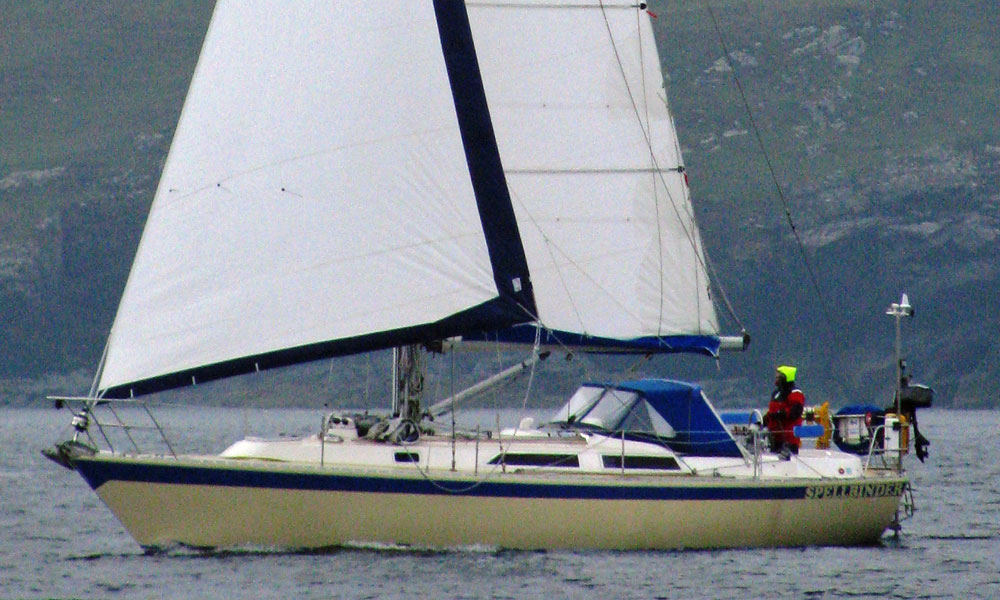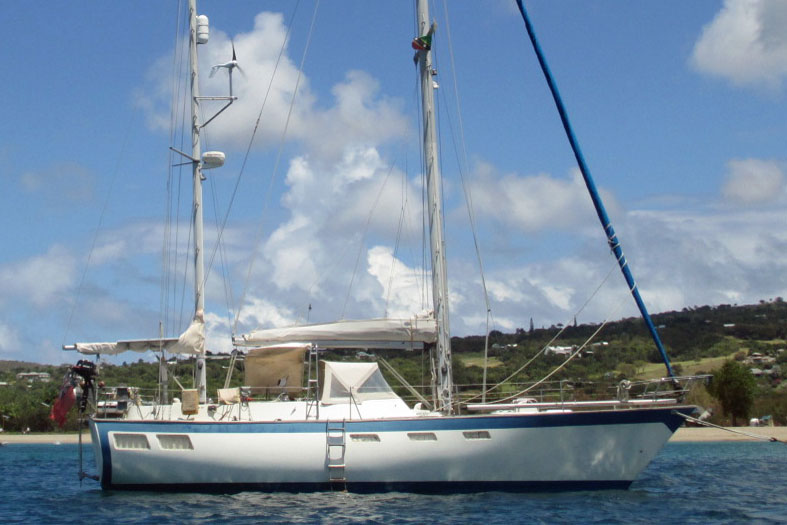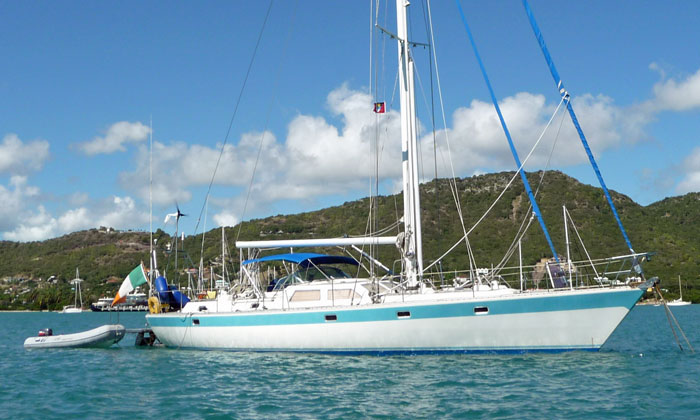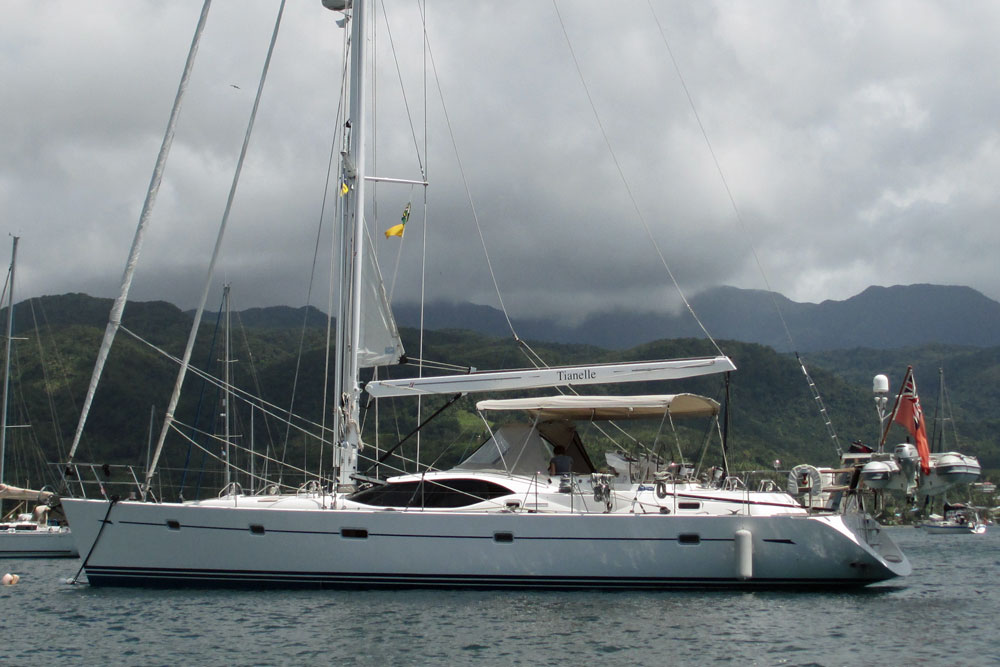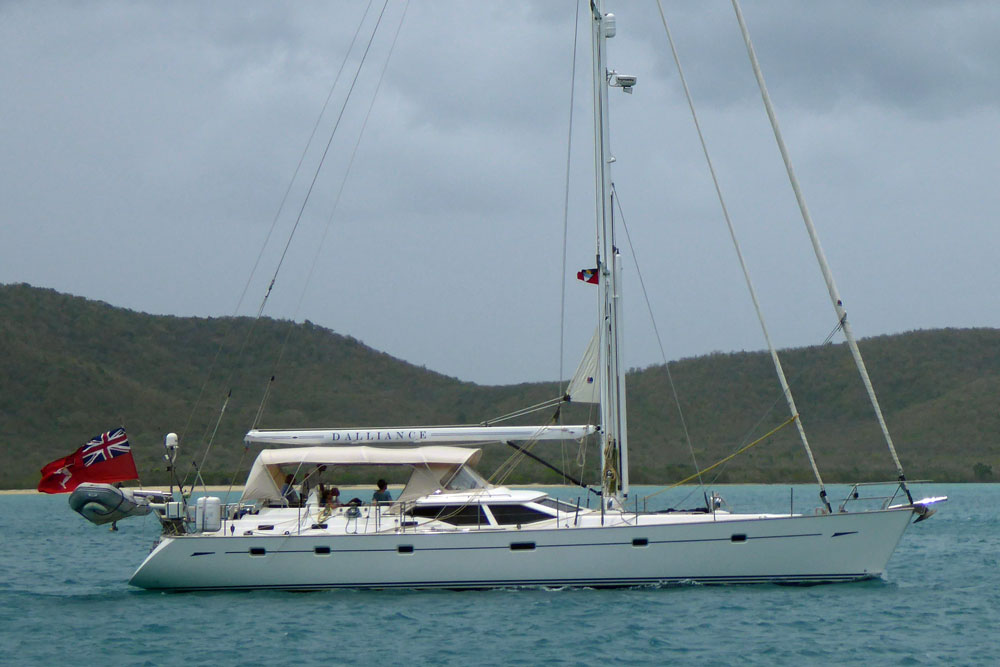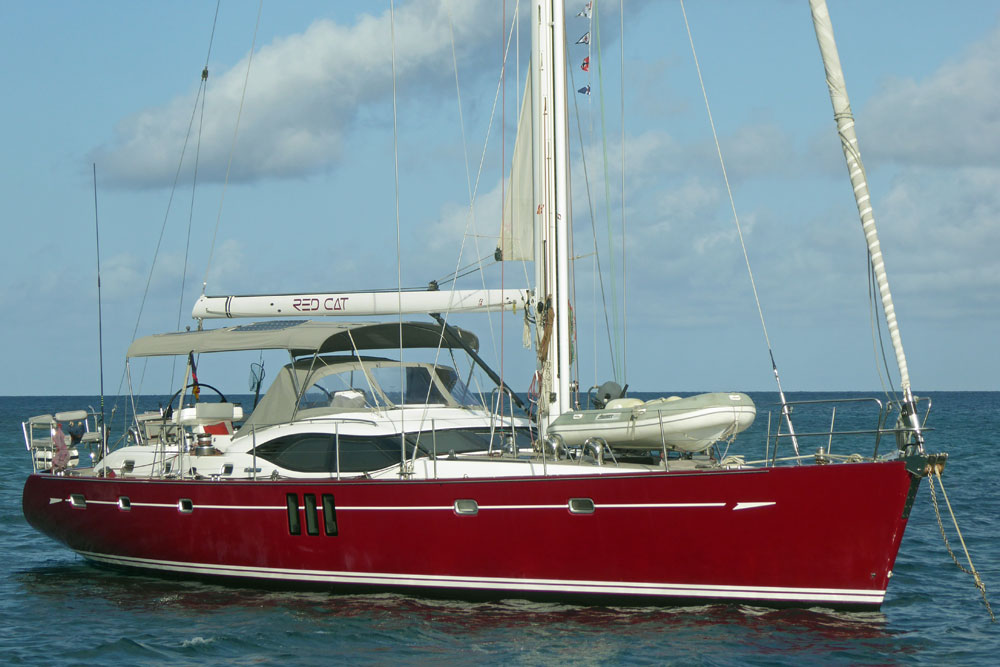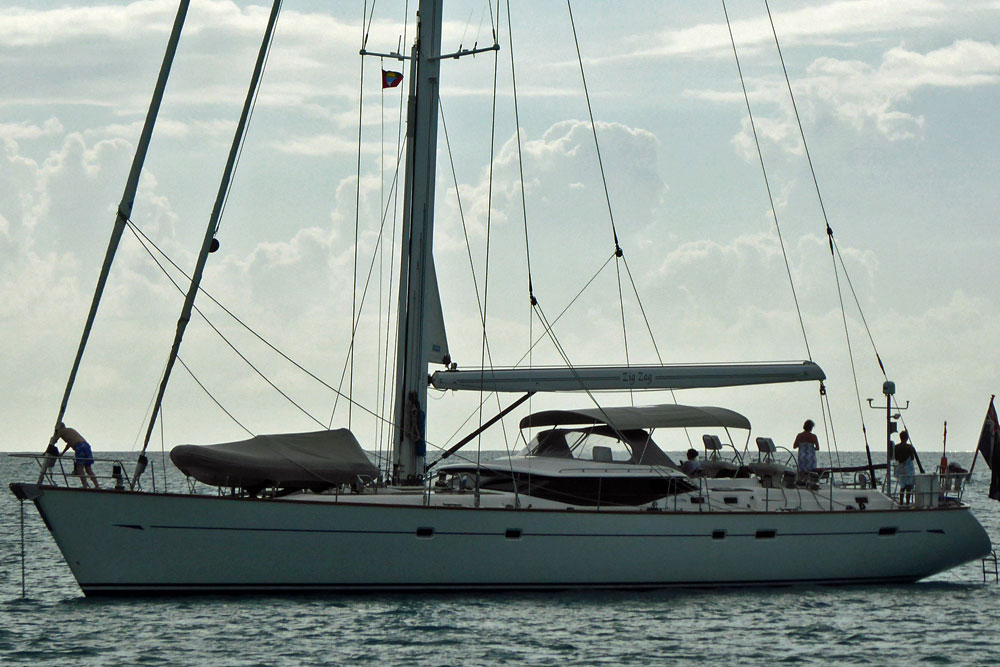- Home
- Cruising Yachts 40' to 45'
- Oyster 45 Sailboat
The Oyster 45 Sailboat
Specs & Key Performance Indicators
The Oyster 45 sailboat, designed by British naval architect Rob Humphreys, is a notable model from the prestigious Oyster range, known for its sturdy construction and capability in various sailing conditions. The vessel is built by Oyster Yachts, a company founded in 1973 and based in Southampton, England.
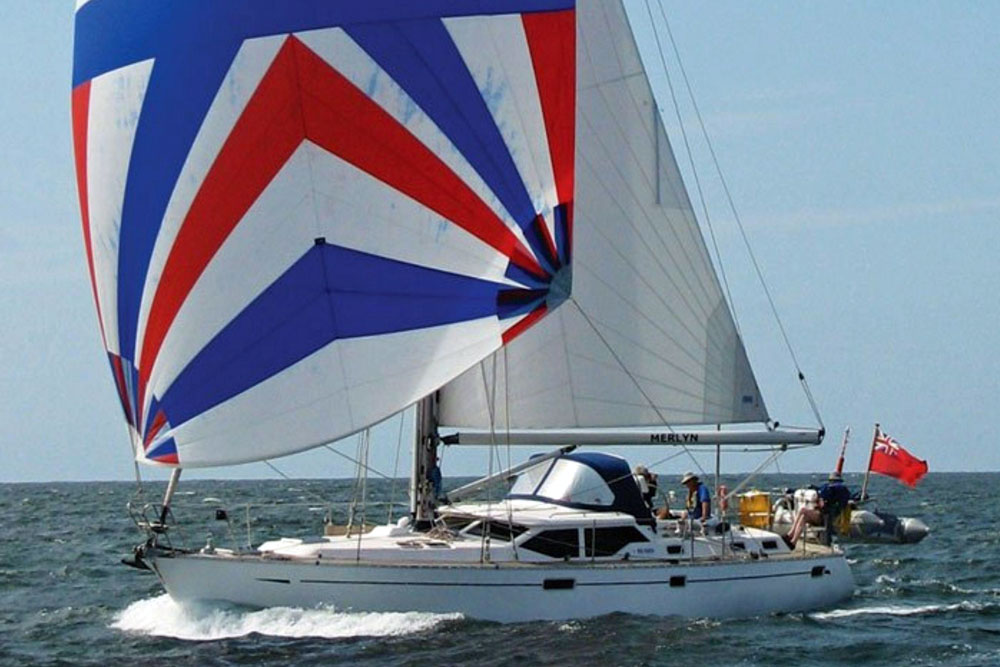 An Oyster 45 flying an asymmetric spinnaker
An Oyster 45 flying an asymmetric spinnakerPublished Specifications for the Oyster 45 Sailboat
Underwater Configuration: Fin keel & Spade Rudder
Hull Material: Fiberglass
Length Overall: 45 feet (13.72 meters)
Waterline Length: 38 feet (11.58 meters)
Beam: 14 feet (4.27 meters)
Draft: 6.25 feet (1.90 meters)
Rig Type: Sloop
Displacement: 29,762 pounds (13,500 kilograms)
Designer: Holman & Pye
Builder: Oyster Marine
Year First Built: 1996
Year Last Built: 2002
Number Built: Approximately 36
Published Design Ratios for the Oyster 45 Sailboat
- Sail Area/Displacement Ratio (13.3): This ratio suggests that the Oyster 45 is somewhat underpowered with its sail area to displacement ratio falling below 16. This indicates that while the sailboat might not exhibit high performance suited to racing, it should perform adequately for cruising purposes. The sailboat will have enough sail area to handle most conditions comfortably but might struggle with speed in very light winds.
- Ballast/Displacement Ratio (33.1): With a ratio above 33 but below 40, the Oyster 45 offers a moderate level of stiffness and should be able to stand up reasonably well to the wind. It isn't as stiff as boats with a ratio of 40 or more, which might affect performance in very heavy winds or when heavily heeled. This ratio also doesn't account for the distribution of ballast; if much of the ballast is lower in the keel, the boat could be stiffer than another with the same ratio but less optimally placed ballast.*
- Displacement/Length Ratio (284.8): Falling within the 'Heavy Displacement' range, the Oyster 45 is built to endure rather than to excel in speed. The heavy displacement suggests better seaworthiness and durability, as well as the ability to carry more provisions and equipment for long passages. This would typically translate into a slower acceleration and greater momentum, which can be advantageous in rough seas but a disadvantage in races or when nimble maneuvers are required.
- Comfort Ratio (40.4): This effectively places the Oyster 45 as a moderate bluewater cruising boat, leaning towards heavy bluewater characteristics. The higher comfort ratio implies that the boat will have less pronounced pitch and roll motions, which is desirable for comfort during long passages. This is particularly beneficial for cruisers looking for a boat that provides stability and less motion sickness in adverse conditions.
- Capsize Screening Formula (1.72): A result well below the threshold of 2.0 signals that the Oyster 45 has good inherent stability and is suitable for ocean passages. This lower capsize ratio implies that the boat is less likely to capsize in heavy weather, providing an extra measure of safety that will be appreciated in challenging conditions.
But note these limitations:
- The theoretical limitations of the Ballast/Displacement Ratio should be noted as it does not provide information on how the ballast is distributed within the hull, an important factor in the overall stability and performance of the sailboat.
- Additionally, the Comfort Ratio, favouring heavier and traditionally shaped boats, might not accurately reflect the comfort experienced on more contemporary yacht designs known for their light displacement and broader beams. Thus, while the Oyster 45 scores well on Ted Brewer’s comfort ratio, it doesn’t mean that newer designs are necessarily uncomfortable; the metric simply favours older, heavier designs.
Read more about Design Ratios...
The Oyster 45 was conceived as a replacement to the extremely successful 435. Holman and Pye increased the hull volume to enable the 45 to offer three genuine cabins and a class-leading saloon that extends over the full beam of the boat.
*The 45 also offers improved sailing performance, the move to an external bulb keel making her stiff and responsive.
In summary, the Oyster 45 is ideally configured for long-duration cruising with moderate to heavy sailing conditions based on its design ratios. It combines seaworthiness with reasonable performance and good onboard comfort, making it suitable for cruisers who value safety and comfort over speed.
This article was written with the assistance of Gemini, a large language model developed by Google. Gemini was used to gather information, summarize research findings, and provide suggestions for the content and structure of the article.
Press Reviews for the Oyster 45 Sailboat
Cruising World tells us: "Noteworthy attributes include a graceful high-aspect sailplan, a center cockpit, and Oyster’s signature “Deck Saloon” cabin configuration. The deckhouse is raised in a subtle fashion, preserving aesthetically the boat’s low profile while enabling the interior to become open, airy and vast. Fixed wraparound windows of stout 9mm tinted glass admit plenty of ambient light and add to the sensation of volume and space. It all comes together in the saloon, a remarkable area as cheerful as it is elegant." Read more...
Other sailboats in the Oyster range include:
Recent Articles
-
Which Type of Boat Fridge Is The Most Efficient?
Apr 24, 25 05:06 AM
The top opening boat fridge is reputed to be more efficient than the front opening type, but that may not be the case - and here, amongst other boat refrigeration considerations, is why -
Multihull Autopilot Selection is Not Straightforward
Apr 19, 25 01:25 PM
Whether its for a catamaran or a trimaran, tiller or wheel steered, a multi hull autopilot must be endowed with specific performance characteristics... -
Wheel-Steering Autopilots: Your Questions Answered...
Apr 18, 25 03:45 PM
Whatever your question, you should find the answer here
